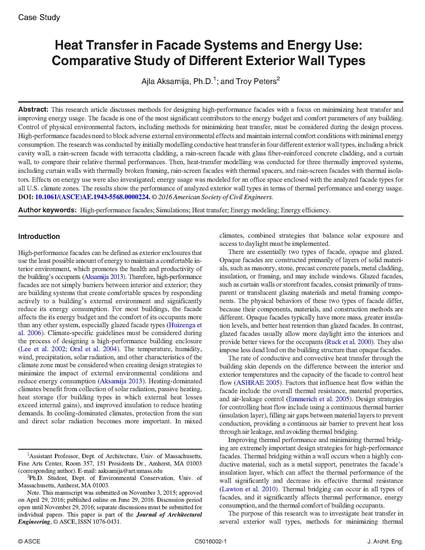
Article
Heat Transfer in Facade Systems and Energy Use: Comparative Study of Different Exterior Wall Types
Journal of Architectural Engineering
(2016)
Abstract
This research article discusses methods for designing high-performance facades with a focus on minimizing heat transfer and improving energy usage. The facade is one of the most significant contributors to the energy budget and comfort parameters of any building. Control of physical environmental factors, including methods for minimizing heat transfer, must be considered during the design process. High-performance facades need to block adverse external environmental effects and maintain internal comfort conditions with minimal energy consumption. The research was conducted by initially modelling conductive heat transfer in four different exterior wall types, including a brick cavity wall, a rain-screen facade with terracotta cladding, a rain-screen facade with glass fiber–reinforced concrete cladding, and a curtain wall, to compare their relative thermal performances. Then, heat-transfer modelling was conducted for three thermally improved systems, including curtain walls with thermally broken framing, rain-screen facades with thermal spacers, and rain-screen facades with thermal isolators. Effects on energy use were also investigated; energy usage was modeled for an office space enclosed with the analyzed facade types for all U.S. climate zones. The results show the performance of analyzed exterior wall types in terms of thermal performance and energy usage.
Keywords
- high-performance facades,
- simulations,
- heat transfer,
- energy modeling,
- energy efficiency
Disciplines
Publication Date
2016
DOI
10.1061/(ASCE)AE.1943-5568.0000224
Citation Information
Ajla Aksamija and Troy Peters. "Heat Transfer in Facade Systems and Energy Use: Comparative Study of Different Exterior Wall Types" Journal of Architectural Engineering (2016) Available at: http://works.bepress.com/ajla_aksamija/111/
